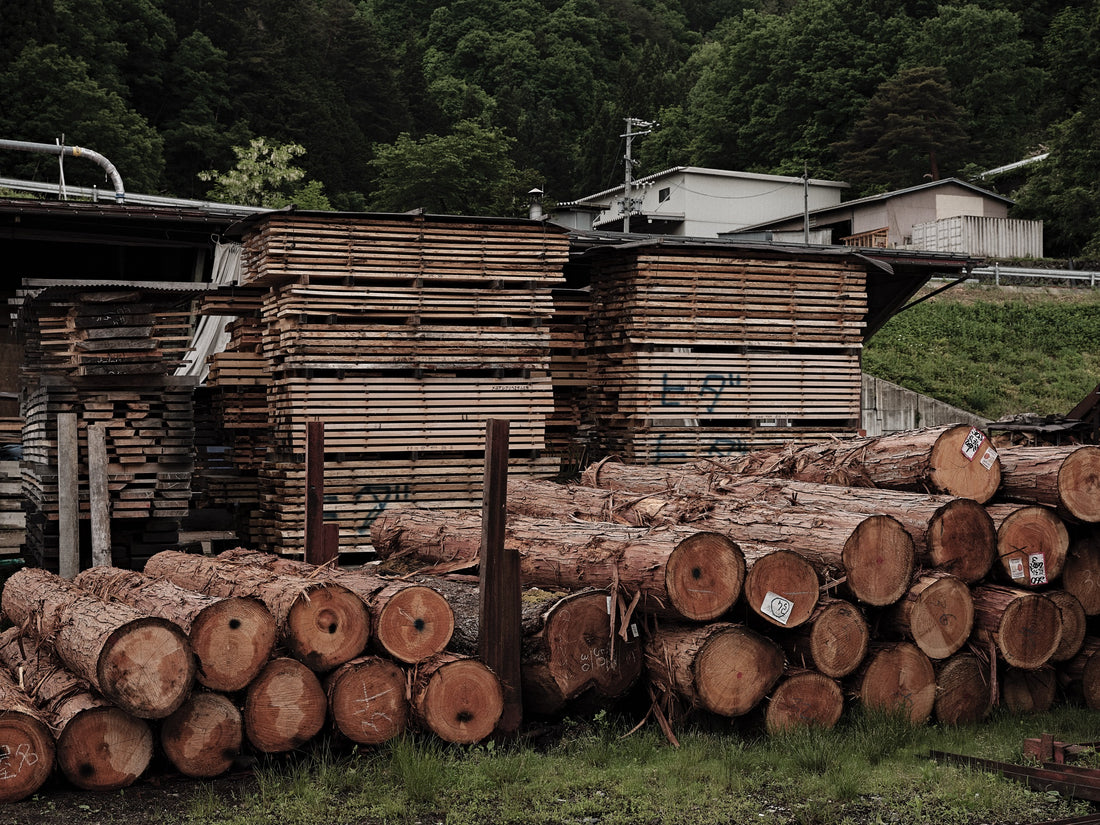
The wooden nodding bowl base is carefully shaped by lathing domestically grown natural wood.
This process gives the wood grain of each piece its unique characteristics.
Wild cherry trees are susceptible to insect damage while they are growing and small insects feed on the cambium layer of the wood.
This results in the appearance of small specks and linear patterns in the wood due to natural repairing of the scars.
Also, as the tree trunks grow thicker live branches are melded into the trunks forming knot clusters or burls called “Ikibushi” in Japanese.
These are the traces of branches that were formed during the growth of the tree.
We think of these wood grain characteristics as testimonies to the years the trees spent growing in the forest.
It enables us to deliver a valuable product to our customers.

*Examples of Individual Differences in Wild cherry trees.
The Japanese Oak tree called “Nara” has a distinctive pattern called “tiger spots” that resemble the fur of a tiger.
The pattern develops as nutrients accumulate in the cell structure of the trees as they grow.
It is a testament to high quality natural wood.
Since it has a silvery shine, it is also called, “silver grain”.

There are times when black spots called “moles” develop in ceramics.
This is caused by iron particles in the clay turning black on the surface of the ceramic when it is fired in the kiln.
Also, air and other residues left in the base during unglazed firing may remain as small holes (pinholes) after firing.
In addition, depending on the location of the ceramic in the kiln, the flow of air and heat differs affecting both the coloration and feel of each piece.
This is what gives each individual ceramic its character.
Enjoy the unique character of each piece.

